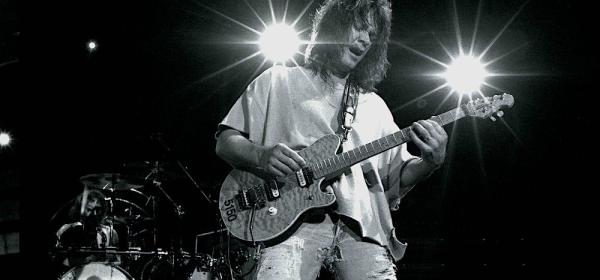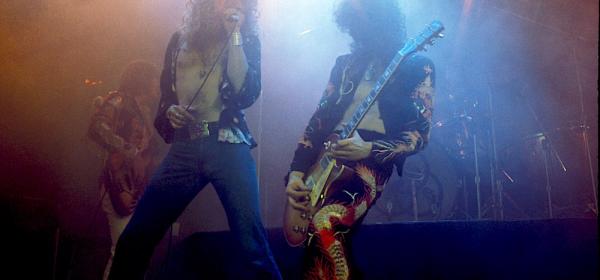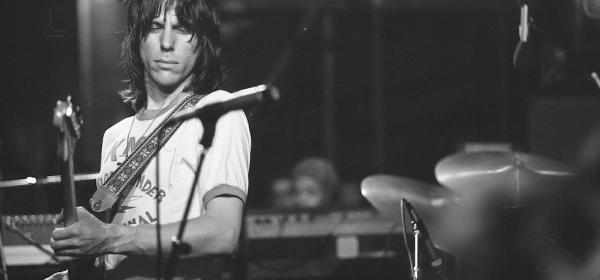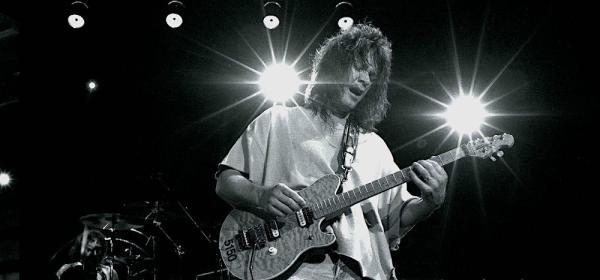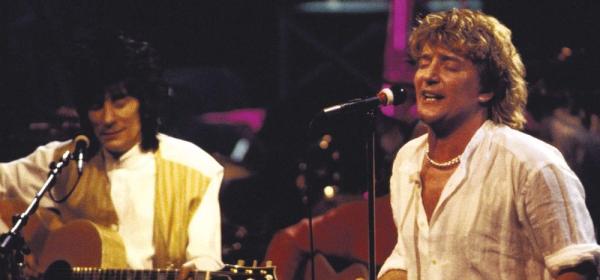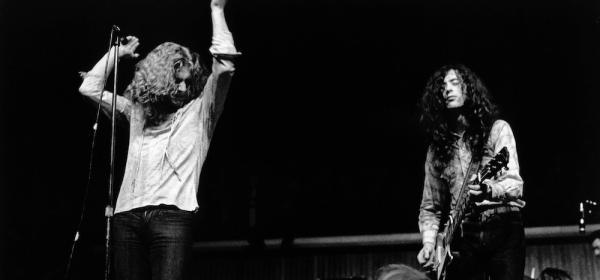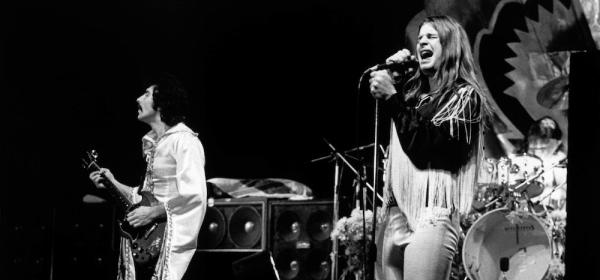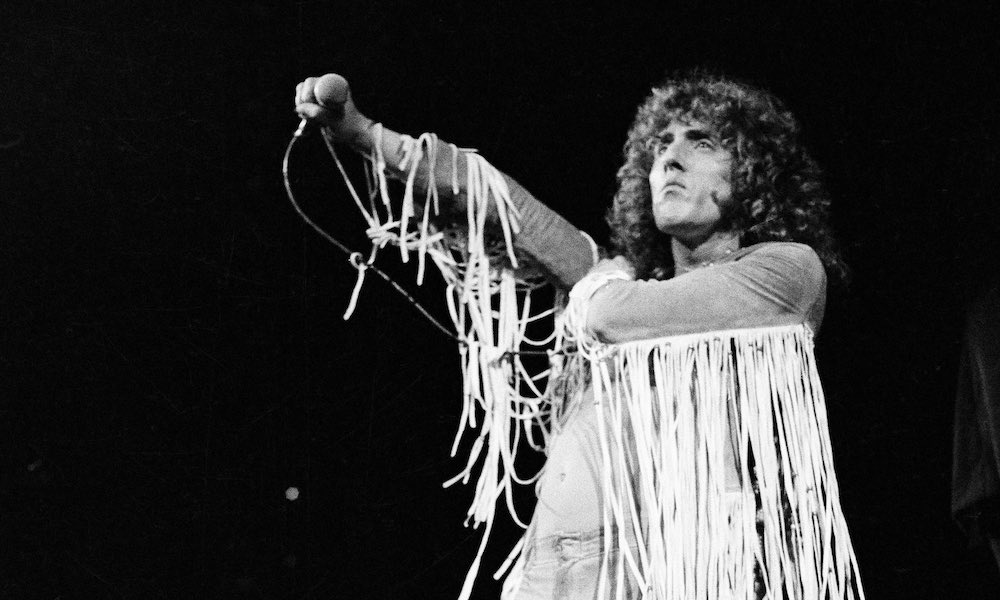
So we’ve had a good look at great Aussie hard rock bands, and we’ve given plenty of coverage to some of the all-time greats, but we’ve never really addressed the big question – who are the true MONSTERS OF ROCK?
We don’t mean pop-rock and we don’t mean blues-rock, although pop and blues are often a factor. We don’t mean glam-rock, punk-rock or grunge-rock. We don’t even mean rock’n’roll, which is suggestive of a lot of things we’re not talking about (like Elvis and Chuck Berry, who we’re not talking about here); nor do we mean just heavy metal, although there is a lot of common ground with that. Because to be a Monster of Rock, you have to be truly gargantuan and over the top, and a lot of metal-types aim for that. The Beatles don’t cut it of course; neither do the Stones, although they nearly do. They’re just a bit too, uh, flouncy. And the likes of Pink Floyd don’t even really rock.
What we’re looking at here is the rockest of the rock. Rock-rock would sound dumb; hard-rock just about covers it, but we’re talking about the hardest of the hard and the purest of the pure.
After much soul-searching and deliberation, and in roughly chronological order, here are the dozen artists we believe most deserving of the ILYOS “True Monsters of Rock” tag. We’re sure you won’t agree with all our choices, so please let us know what you reckon on Facebook!
The Who
They started out as soul loving mods who adopted the tunefulness of the Beatles, but the hardness of their instrumentation and Daltry’s vocals was always a point of difference. By the late ‘60s, nudged along by the likes of the Small Faces and the Yardbirds, and Cream and Jimi Hendrix, they’d basically invented hard-rock as something that sounded big; Live at Leeds was recorded in a two-thousand capacity venue but it sounds like a stadium. As they moved into the ‘70s they basically defined it with power-chord blasting wide-screen tracks like Won’t Get Fooled Again and Baba O’Reilly.
Led Zeppelin
Coming from a bluesier place than the Who but sounding similarly suited for the arenas, Led Zeppelin introduced the concept of the orgasmic Viking God lead singer whilst building on the Hendrix/Cream guitar heroics. Jimmy Page also defined the concept of the riff, developing a heightened level of dynamics in the guitar attack on a multitude of tracks, starting with Communication Breakdown on their first album.
Black Sabbath
Whilst Paranoid came from a similar place as Communication Breakdown, Sabbath’s real art was in the development of heaviness through slowness. Which can be best heard in the stunning Iron Man. From the second album on they also eschewed all traces of blues and of course they developed the Hammer Horror-type schtick which has been a trademark of Heavy Metal ever since.
Deep Purple
Deep Purple one of the big three in the early days of heavy metal, along with Zeppelin and Sabbath, thanks to Richie Blackmore’s guitar, Jon Lord’s dark organ tones, and a thundering rhythm section. Smoke On The Water is one of the all-time great riff songs, but Fireball and Speed King broke new ground by introducing genuine pace into proceedings; pace that was soon echoed in punk (the Damned’s New Rose) and thrash metal.
Iggy & The Stooges
They never had a hit and were so extreme as to be a freak how in the eyes of many, but after two Avant Gard albums with Ron Ashton on guitar, Iggy brought in James Williamson to make the hardest hard rock album of ‘em all. It doesn’t get any purer than Search & Destroy. The Stooges’ influence cannot be doubted and is there to be heard in Alice Cooper and David Bowie as well as every punk band since and every punk-loving hard rock band since.
Kiss
They were a joke to many, but tell that to millions of kids who loved them and were dragged into this hard-rock thing by their comic book schtick and big hooky riffs. And their influence has been insidious, to the point that, guitar heads and musical purists aside, they’re probably more relevant than someone like Deep Purple these days. The Kiss guys were into the classic English rock bands; they added a bit of New York Dolls/Stooges flash and the comic book/sci-fi thing to give themselves an edge, but really, they had the riffs. Great ones, and maybe more of them than anyone before or since.
AC/DC
Brought up on Muddy Waters, inspired to turn things up really fucking loud by Aussie pioneers like Thorpie and Lobby, and shaped into something lean, catchy and radio friendly by their Easybeat big brother, the Youngs developed a type of rock that was so lean and to the bone as to be almost prototypical. In some ways they were also like Kiss selling real sex instead of fantasy stuff, or a blues-rock punk band for kids who thought blues-rock was boring and punk too weird. They are the hard rock band that everyone loves.
Thin Lizzy
Sort of like an Irish-American equivalent of the Scots-Australian AC/DC, Lizzy had the larrikin edge but combined blues feel and Celtic soul into a creamy hard rock sound that covered a lot of ground and which always seemed real. Phil Lynott was as natural a born star as Bon Scott, but with a melancholy that was perfectly expressed by the fluid twin leads of guitarists Scott Gorman and Brian Robertson. Live & Dangerous is perhaps the greatest of all double live LP’s.
Motorhead
The band that changed the sound of metal forever with its speed and double kick drum antics of Philthy Phil Taylor, Motorhead were purer even than AC/DC when it came to developing a prototypical sound and being willing and able to stick to it. Lemmy just wanted to form an English version of the MC5, but with the band’s links to Hawkwind and the Pink Fairies what came out was a seemingly mutant hard rock that took a while get to get used to. Punker than punk and heavier than metal, Motorhead inspired a (the) New Wave of British Heavy Metal and provided a template for pioneering thrash metallers like Metallica and Slayer.
Iron Maiden
Maiden took the classic metal of Deep Purple and channelled through Motorhead’s accelerator and Judas Priest’s apocalyptic warrior fantasies to come up with a new sound that was harder and faster but clearly aligned with the metal of yore. These days classic tracks like The Number of the Beast sound like the embodiment of everything we know about heavy metal; Maiden led the NWOBHM charge and were the sound of hard rock as the ‘80s dawned.
Van Halen
With his band’s first album, Eddie Van Halen helped shape a new form of hard rock that was fiery and detailed. Van Halen sounded tropically hot – befitting a band borne of Californian sunshine – with an in your ear closeness that was very removed to the vastness the arena rockers of the ‘70s. Of course Eddie was also rock’s first shredder, which means he has a lot to answer for, but for those early years at least, Van Halen were as pure and exciting a new rock phenomenon as there was on the planet. Alas Australia didn’t pay that much attention to them until they’d softened their sound somewhat.
Metallica
Younger readers might want to argue, but we’re closing the book here with Metallica. The last true monsters, and a band that evolved from thrash metal riff drillers supreme to a versatile and soulful band that can kind of do anything. Early fans will point to tracks like the great “Seek & Destroy”, but we return to to the earthshaterring epoch of The Black Album and its hits “Enter Sandman” and “Nothing Else Matters”.
And if you love these bands, you'll no doubt be into our Influential Brits playlist which covers some of the above amd more!


